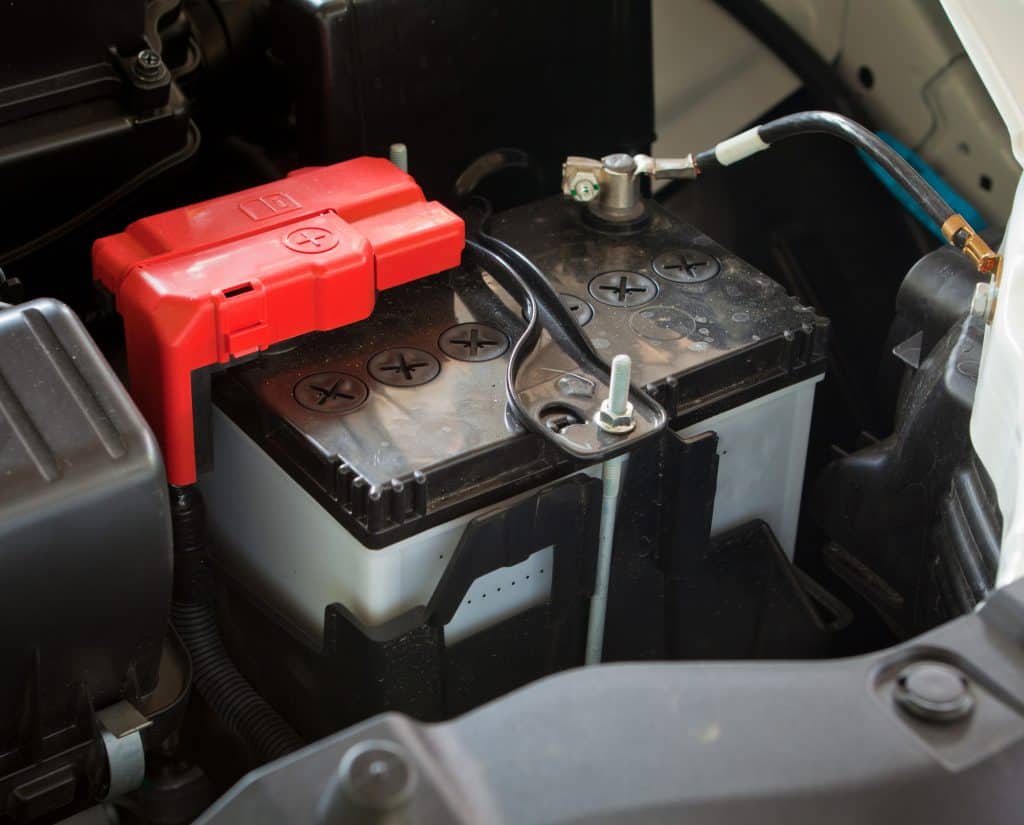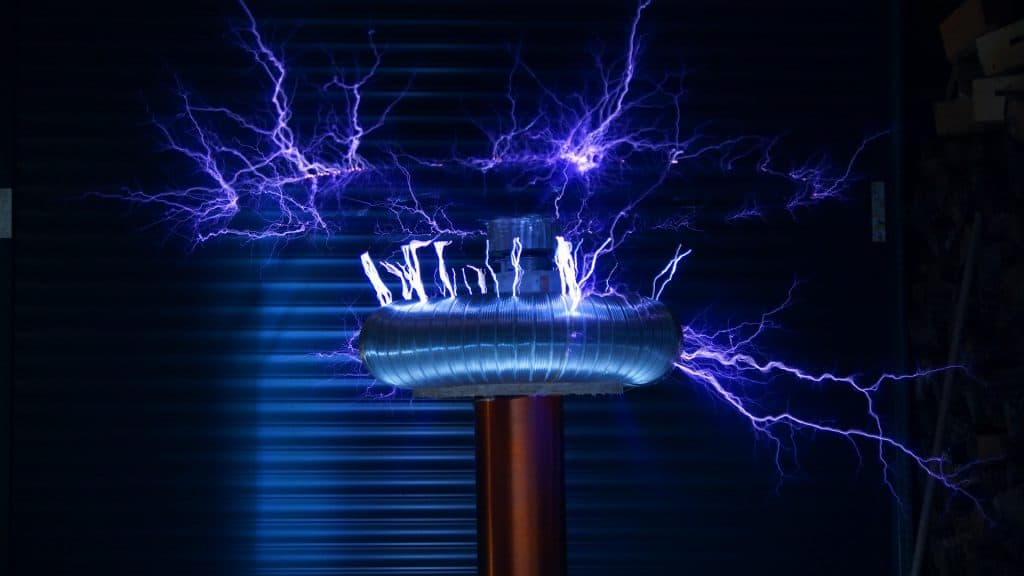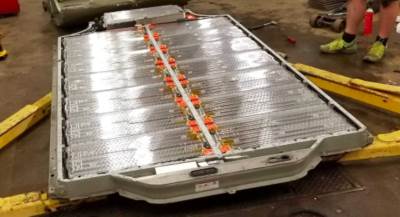If you’ve looked at various Tesla models and seen the kind of voltages that they operate on compared to regular cars, it may have occurred to you to ask why that is. In today’s article, we’ll be exploring the world of electric car voltages with a particular focus on Tesla models.
What you find as you delve deeper into the world of EV voltages is that in general there has been a great shift in electrical engineering and that higher voltages are set to be the norm on newer-generation models moving forward. First, let’s understand exactly what we’re referring to when we talk about these EV voltages.
Tesla cars run on 300-400 volts, primarily to achieve greater efficiency throughout the whole electric vehicle powertrain. This high level of voltage is perfectly safe though, with all components designed to work well at high voltages.
Electric Car “Voltage”
Gasoline and diesel cars have an electrical system too, of course, which has been long powered by the typical 12-volt lead-acid car battery:

We’re all familiar with the technology. It charges as we drive, helps get the engine started, runs the various electrical components like lights, a/c and more.
The advent of hybrid cars introduced more advanced electrical systems into our cars, these ones being capable of powering the propulsion via electric motors. These systems made use of 48-volt battery systems, a four-fold increase on what we were used to. Hybrid cars still have the old 12-volt batteries in them, too.
Moving on even further, however, brings us to the even newer all-electric car, which just in the last 20 years has become a much more viable and increasingly applied automotive technology. Modern electric cars are using battery packs in the hundreds of volts, anywhere from 200 to 800 volts, in fact.
You may look at technical specifications on electric cars and wonder to what all these electrical terms like voltage are referring. Besides volts, amperage is also an important factor in the specification of a Tesla or other EV. What’s the difference? A useful analogy for describing the difference between these two terms is a garden hose and the water running through it. Think of the hose as an electrical cable, and the water as electric current.
Important Terms

Voltage is similar to water pressure in our garden hose analogy. A higher voltage means more pressure, thus most power being moved through the system.
Ampere is similar to the idea of water flow in our analogy. We can increase the flow by increasing the diameter of our “cable.” The same is true in battery technology. Wider cables can have more current passed through them.
We also need to consider watts, which are kind of like the new horsepower when it comes to electric cars. The number 745.7 watts is equivalent to 1 horsepower.
Tesla Car Voltages
Different Tesla models run on different voltages, namely:
- Tesla Model S – 375 volts
- Tesla Model 3 – 350 volts
- Tesla Model X – 300 volts
- Tesla Model Y – 400 volts
You may think these numbers look high, but you should be aware that the Porsche Taycan, for example, runs at a nominal rate of 800 volts. The voltage to amperage balance is key in the construction of any electric car. If you have greater voltage, then it means you can push more current through smaller cables. Smaller cables means a lighter load, which weighs down the EV less.
Let’s compare for a moment the Tesla Model 3 and the Porsche Taycan. The Model 3 is 300 volts, which means it needs to push 715 amps through the cables to the battery to charge it up with 250kW. The Taycan would only need 312 amps to get the same 250kW charge. When you can get smaller amperages, you can use smaller cables, and that reduces the overall weight of your electric car.
Tesla Battery Packs – Breakdown

The Model S and Model X cars feature batteries of 100kWh, 85/90kWh, and 60/70/75kWh. Each comes with a different configurations of cells, which is the main reason for the difference in total voltage in each unit. The Model 3 features 75kWh and 50kWh batteries.
For example, the 100kWh battery on the Model S is 400 volts. This battery includes 16 modules with 6 groups of 86 cells, which makes 516 cells per module. Each of the 16 models produces 25 volts, giving you a final total of 400 volts.
Tesla has worked closely with Panasonic to develop its battery cells. There are currently two main categories of cell in production, namely the 18650, and the 21700. The former is the older of the two, developed first in 2010 to help Tesla transition away from what media had been calling “laptop batteries” owing to their similarity to common commercial batteries available at the time.
At the time, the 18650 was lauded as a sturdy, tough battery with among the most innovative battery chemistries ever developed.
The 21700 are manufactured at the new Gigafactory 1 facility in Nevada, US. The 21700 are larger and more efficient cells, but amazingly are cheaper to produce than their 18650 cousins. It’s about 40 percent bigger in volume, in fact, but also up to 15 percent more efficient than the 18650 cells. We are yet to learn exactly what Tesla did to alter the battery chemistry for the 21700.
Why Are We Seeing Higher Voltages?
In general, the trend towards higher voltages in EV battery packs can be explained by the need to transfer more power with less loss though the same basic framework of cables. As the power demands of new electric cars increase, as does our desire for range, then more and more of this “pressure” from the voltage is needed to ensure enough power gets where it needs to go.
Such a model isn’t without its drawbacks. Using higher-voltage batteries requires components of a higher voltage rating to be used throughout the vehicle and its system, and that can be expensive and complex. It will also require effective integration of switch-mode power supplies which will be required to properly handle the increased flow that higher voltage brings.
Failure to meet these challenges could have some catastrophic results, which we will explore a little more in the next section on high-voltage battery safety.
Higher Voltages – Are These Batteries Safe?

Transitioning up to higher voltage batteries has not been an absolutely smooth ride. Since 2010, the entire industry has been dogged by customer fears and strong accusations about the safety question marks hanging over these new batteries, especially those lithium-ion batteries commonly used at the time. Tesla was not immune from criticism, either.
While some other brands were facing scrutiny earlier over safety concerns in their lithium-ion batteries, Tesla endured a major probe from the National Highway Traffic Safety Administration (NHTSA) from October 24, 2019. The probe stemmed from numerous accusations and reports of several spontaneous car fires in the high-voltage battery.
What was different to some of the previous investigations, however, is that these fires were alleged to have happened not because of a collision or other impact damage, but rather an inherent defect in the battery pack.
The probe is targeting all Tesla Model S and Model X vehicles for model years 2012 through 2019. In particular, they are investigating a possible link to software updates released by Tesla from January 1, 2019 which apparently limited the maximum battery capacity or cell charging voltage.
Finally, the letter directed to Tesla pointed to potential problems with the Battery Management System which manages charging control and battery thermal management. The most insidious accusation even says that Tesla was using its over-the-air updates to cover up potentially lethal defects in their high-voltage batteries.
This is an ongoing story that has yet to reach a final conclusion, but it should be noted that no conclusion doesn’t mean anything either in Tesla’s favor or against them. Elon Musk robustly defends the safety standards of his vehicles, pointing to the many fire hazards and resulting deaths presented by traditional gasoline engines.
Conclusion: Higher Voltages are the Trend
As any good electrical engineer would know, higher voltages in Teslas and other electric vehicles are an inevitable result of the demand for greater efficiency. Tesla has worked for years to balance and fine tune the voltage-amperage partnership to deliver now the EVs with the longest confirmed range out there. Where other big players like Nissan are just crossing the 200-mile threshold in range, Tesla has been comfortably over the 300-mile line for a while now, and is set to go further with its newer, more innovative battery designs.
The fact remains that in electric cars, voltages of 400 to 800 volts are required to generate enough juice to run the vehicle, especially the electric motor. The challenges ahead are how to effectively challenge the already perceived fear of safety problems that come along with using higher voltages. This will mean that companies like Tesla have to work not just on the power distribution — maximizing the “pressure,” to borrow from our first garden hose analogy — but also the systems that will ensure they work properly, like switch-mode power supplies
16 comments
So charging stations have to provide electricity at a variety of voltages?
Is the electricity delivery system to a charging station so unique it can’t be installed in my garage?
You can install it in your garage, and it’ll then be set at a specific voltage. Charging stations are slightly different – whilst the actual underground wires would be a single voltage, they will vary the output voltage to individual cars based on a range of factors.
However it’s also worth mentioning that it’s fine to use a low voltage charger to charge your EV – it won’t cause any damage, it’ll merely charge up slower.
Can I charge an EV from a conventional generator producing 240 volts?
Yep you can, and it’s often used by off grid fans. Of course, it’s not the greenest approach – but it can work for sure.
” The voltage to amperage balance is key in the construction of any electric car. If you have greater voltage, then it means you can push more current through smaller cables” – Incorrect.
Power (watts) in a DC system is Volts x Amps. Higher voltages mean you can move the same amount of power through a thinner cable, as less current is required.
Paul,
The last time I looked, Ohms law certainly did state that a higher voltage will push more current through a smaller cable.
V=IR So if a cable, same one for both voltages, has a fixed R(esistance) value, then the higher voltage will most definitely push more current through. Double the voltage, double the current.
Cable losses, (which cause heat and hence limit the cable power carrying capacity), is a function of the current squared times by the cable resistance. If you can halve the current, then you quarter the resistive losses. That’s why a small cable can carry FOUR times the power if you double the voltage. A big win. Hence your last paragraph is accurate but missed the detail about the magnitude of the improvement, the important part.
all batteries are DC, Then an alternator can be made to recharge EV’s on the road. I’v been saying this for years.
I think conventional wisdom is that energy is still expended (overall) on making the EV move forward, so re-harvesting some of it via an alternator won’t allow for full recharging. The closest we have is regenerative braking, but that’s taking advantage of a slowing down of the EV – not maintaining (or increasing) the speed.
the teslas motors. do they run on an alternating current?
I believe it varies, with the Tesla Model S using AC motors but the Model 3 using DC motors – but it’s more of an advanced/hybrid motor than a simple, standard DC motor.
A DC, brushless motor, uses typically three phases, all generated by the electronics in the Electronic Speed Controller.
The motors are brushless to avoid problems including arcing which shortens the motor life. The technology is definitely AC if you consider the voltage applied to any one phase with respect to time. BUT the same applies for the cheapest DC, brushed motor too, which reverses the current flow as brushes disconnect from one winding and connect to the next winding sequentially, when the motor is 180 degrees from the initial position, the conduction is into the initial winding but in the opposite polarity.
In a sense, all DC motors are AC, if you look at each winding, one at a time.
From the outside. DC goes to a typical petrol car’s starter motor, AND DC goes to the ESC on a Tesla.
Can you run a Tesla off a generator? If
you were to carry an onboard generator you wouldn’t have to worry about the battery running low.
It is technically possible, and GeneratorBible cover this fairly well. However using fossil-fuel generators to power an EV is something that many Tesla owners would frown upon! I’d probably argue that buying a gasoline car might be better than owning a pricey Tesla but hacking a generator onto it. Alternatively, some BMW i3 models contain a range extender which is a similar (but officially supported) idea – it might be worth checking that out.
This is how we will see gas/electric hybrid cars in the future. The ICE will be used only to produce electricity and will not be connected to the drive.
Well 50% of electricity produced is coal.. so I think these owners would have to be slow to not realize their electric car is actually causing more CO2 productions than most gas/electric hybrids.. A 100,000 thousand tons of harvesting minerals for a single tesla battery.. the machines they use to mine are GAS… so these are the least green cars in the world lol
I certainly agree that the current situation isn’t ideal, but unlike gasoline cars, EVs do have the potential for completely renewable travel. Plus once an EV battery has degraded to a certain extent, it can be recycled for a range of purposes – including as house batteries (compared to gasoline cars, where much of the engine needs scrapping since it’s unclean so can’t easily be melted down again). So once the minerals have been dug out the ground, there is more positive potential than with gasoline cars.
I do agree that things aren’t as clear cut right now, though. It’s unhelpful when the media (and some EV owners) have a debate along the lines of “EVs = amazing for the environment; gasoline cars = terrible for the environment”. This definitely isn’t the case.